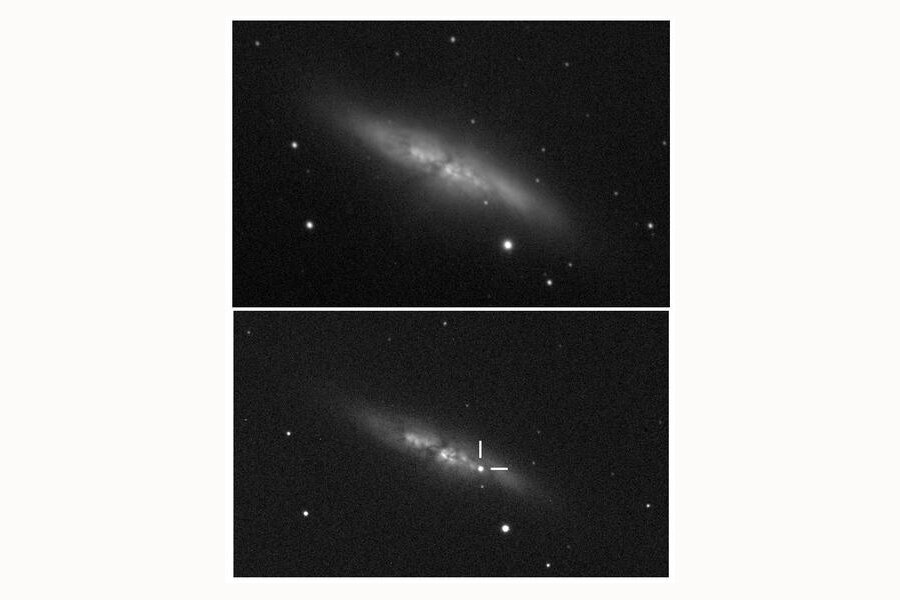By chance, astronomy students spot humongous space explosion
Loading...
The sky was getting cloudy.
Instead of the planned practical astronomy class, Steve Fossey at the University of London Observatory, decided to train four undergrads how to use a CCD camera on one of the observatory’s automated 0.35–meter telescopes, according to the press release by the University of London.
The students decided to look at the Messier 82 galaxy, located 12 million light years from Earth. "It is a very photogenic galaxy and fascinating, so we often look at it," Fossey says.
What followed was a serendipitous discovery of a supernova, an exploding star.
Working with Dr. Fossey, the students – Ben Cooke, Tom Wright, Matthew Wilde, and Guy Pollack – spotted the explosion in nearby galaxy Messier 82, the press release stated.
Fossey and his students noticed a starlike object on the galaxy, which Fossey did not recognize from previous observations, according to the press release.
They looked up online archive images of the galaxy, and it appeared that what they were looking at was probably some kind of a new star in the galaxy, the team said in the press release.
The clouds were closing in, says Fossey. Therefore, the team quickly started taking a series of pictures with 1- and 2- minute exposures through different colored filters so that the color and brightness of the star could be measured later. But a reliable way to verify what we were seeing was indeed a supernova was through spectrum analysis, Fossey says.
So he alerted other astronomers around the world, who verified the discovery after running a spectrum analysis, he adds.
“To be honest it was just a really odd experience," said Mr. Wilde. "We were expecting a standard quick look through the telescope and a chance to use the camera for the first time before the clouds moved in, that's all. When we started looking and Steve began getting a bit more excited, none of us could really believe what was going on."
This supernova named SN 2014J located in the Messier 82 galaxy is one of the closest to be spotted in recent decades. The one before that was observed in Messier 81 in 1993 and faded after a few weeks, Fossey told the Monitor.
Both M81 and M82 are close enough to exert a gravitational influence on one another, he says.
SN 2014 J is a Type 1a supernova, caused by a white dwarf star pulling matter off a larger neighboring star until it becomes unstable and explodes, according to the press release.
The explosion event, says Fossey, can help astronomers observe a supernova relatively close and understand the phenomenon of supernovae explosions with much greater precision. "The explosion could also help us understand the distances of galaxies and learn more about the expansion of the universe," he adds.








